Additional notes (click to expand)
Horticulture
This plant overwinters outside in this London garden, relatively sheltered so not exposed to the worst frosts. As you can see from the images, the late winter pictures (eg Opuntia robusta RCP3-09 161.jpg (=March 2009)/ Opuntia robusta RCP4-10 161.jpg/Opuntia robusta RCP4-10 163.jpg/=May 2010), this cactus becomes flabby and wrinkled. This is normal and it returns to normal turgor in the summer.
Henry Oakeley, Nov 2015
Medicinal
O. humifusa was used by the Native Americans for wounds, burns, rattlesnake bites and warts.
Moerman, Daniel E. (2009) Native American Ethnobotany. Timber Press. P.366
Other use
Opuntia humifusa.Raf. Cactaceae Eastern prickly pear, Indian fig. Distribution: Eastern North America. Stearns (1801) reports 'OPUNTIA a species of cactus. The fruit is called the prickly pear. If eaten it turns the urine and milk in women's breast red'. This is likely to be Opuntia robusta. The ripe fruits are reported edible, raw, and the leaf pads also, either raw or cooked. The fine spines, glochids, cause severe skin irritation so should be wiped off or burnt off prior to cooking and eating. Moerman (1998) reports that O. humifusa was widely used by Native American tribes for wounds, burns, snakebite, warts (fruit), and as a mordant for dyes used on leather. Widely used, with the spines removed, as a famine food, and dried for winter use.
Oakeley, Dr. Henry F. (2013). Wellcome Library notes.
link
Geographical distribution
- Northern America, Eastern Canada, Ontario
- Northern America, North-Central U.S.A., Illinois
- Northern America, North-Central U.S.A., Iowa
- Northern America, North-Central U.S.A., Kansas
- Northern America, North-Central U.S.A., Minnesota
- Northern America, North-Central U.S.A., Missouri
- Northern America, North-Central U.S.A., Nebraska
- Northern America, North-Central U.S.A., Oklahoma
- Northern America, North-Central U.S.A., South Dakota
- Northern America, North-Central U.S.A., Wisconsin
- Northern America, Northeastern U.S.A., Connecticut
- Northern America, Northeastern U.S.A., Indiana
- Northern America, Northeastern U.S.A., Masachusettes
- Northern America, Northeastern U.S.A., Michigan
- Northern America, Northeastern U.S.A., New Jersey
- Northern America, Northeastern U.S.A., New York
- Northern America, Northeastern U.S.A., Ohio
- Northern America, Northeastern U.S.A., Pennsylvania
- Northern America, Northeastern U.S.A., Rhode I.
- Northern America, Northeastern U.S.A., West Virginia
- Northern America, Northwestern U.S.A., Montana
- Northern America, South-Central U.S.A., Texas
- Northern America, Southeastern U.S.A., Alabama
- Northern America, Southeastern U.S.A., Arkansas
- Northern America, Southeastern U.S.A., Delaware
- Northern America, Southeastern U.S.A., Florida
- Northern America, Southeastern U.S.A., Georgia
- Northern America, Southeastern U.S.A., Kentucky
- Northern America, Southeastern U.S.A., Louisiana
- Northern America, Southeastern U.S.A., Maryland
- Northern America, Southeastern U.S.A., Mississippi
- Northern America, Southeastern U.S.A., North Carolina
- Northern America, Southeastern U.S.A., South Carolina
- Northern America, Southeastern U.S.A., Tennessee
- Northern America, Southeastern U.S.A., Virginia
Opuntia humifusa (Raf.) Raf.
Family: CACTACEAEGenus: Opuntia
Species: humifusa (Raf.) Raf.
Common names: Creeping Prickly Pear
Distribution summary: North America
Conservation status (IUCN Red List): Endangered
Habit: Succulent
Habitat: Dry, sunny, rocky mountains
Garden status: Currently grown
Garden location: Arid zones (Q)
Flowering months: July, August
Reason for growing: Medicinal, other use

.JPG)
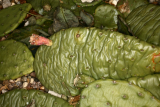
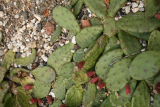
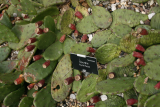
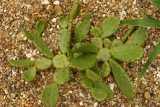
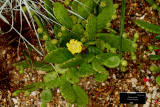
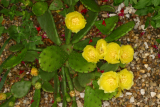
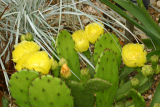
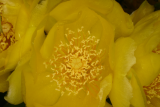
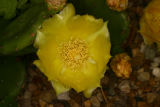
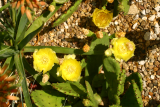
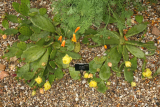
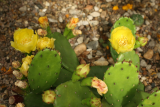
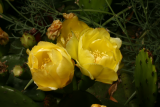
.JPG)
.JPG)
.JPG)
.JPG)
.JPG)
.JPG)
.JPG)
.JPG)
.JPG)
.JPG)
.JPG)
.JPG)
.JPG)
.JPG)
.JPG)
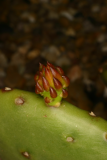
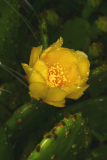
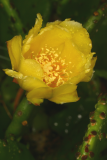
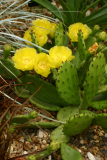
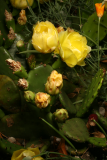
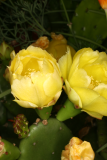

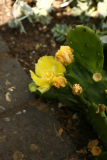
.JPG)
.JPG)